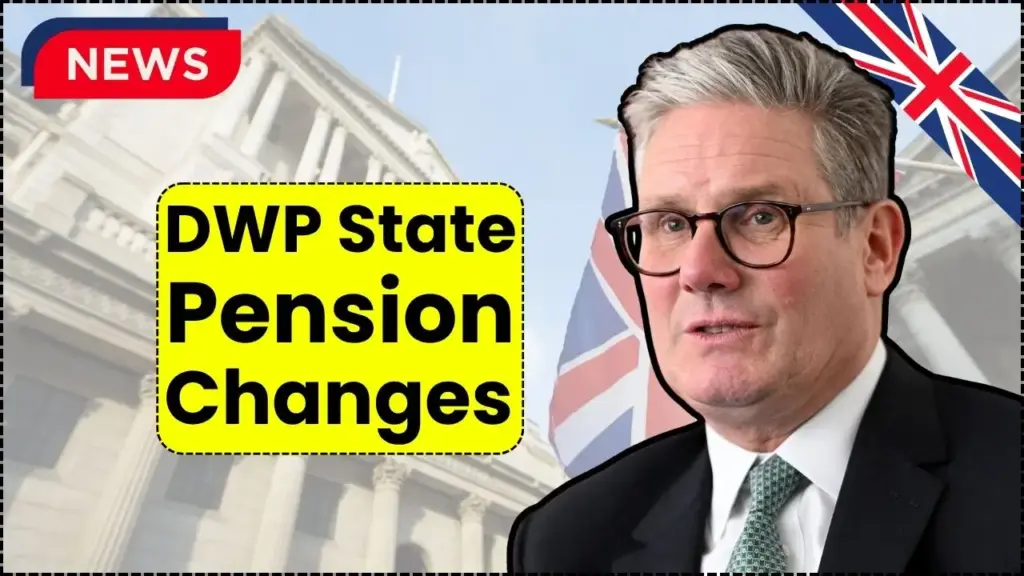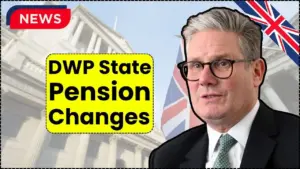If you’re planning your retirement, the DWP’s 2026 timetable matters more than ever because five specific rule changes will shape when you can claim, how much you get, and whether you need to adjust your plans now rather than later. The headline is clear: State Pension age moves to 67 in a phased rollout from April 2026 to March 2028, while triple lock uprating and National Insurance rules determine the pounds and pence you’ll bank each week in 2026/27 and beyond. The full new State Pension baseline for 2025/26 is £230.25 a week, and current projections point to another mid-single-digit uplift from April 2026 under the triple lock earnings measure, pushing more retirees closer to or over tax thresholds if allowances don’t shift.

This is the moment to lock in your plan around the DWP 2026 State Pension changes because timing, NI history, and the triple lock will define your income floor next year and after. If you were born after 6 April 1960, expect your State Pension age to land at 67 sometime between April 2026 and March 2028, and use your NI record and an up-to-date forecast to confirm your exact entitlement and whether topping up voluntary contributions could pay off.
Table of Contents
DWP Announces Major 2026 State Pension Changes
| Key area | What changes in 2026 | Who it affects | Why it matters |
|---|---|---|---|
| State Pension age | Phased rise from 66 to 67 between Apr 2026 – Mar 2028 | Born after 6 April 1960 | Delays access by up to one year for early 1960s cohorts |
| Triple lock | 2026/27 increase driven by highest of CPI, earnings, or 2.5% | All claimants | Sets weekly amount from April 2026; earnings projected ~4.7% |
| Baseline rates | Full new State Pension £230.25/week in 2025/26 | New and current claimants | Starting point before April 2026 uplift |
| NI qualifying years | 35 for full, minimum 10 for any entitlement | Workers, carers, self-employed | Determines full vs partial pension |
| Policy reviews | Third State Pension age review underway | Future retirees | Could influence timing of rise to 68 |
What’s Changing in 2026
The increase to State Pension age is legislated and staged, completing by March 2028 for men and women alike, so anyone in the affected birth cohorts needs to account for a later claim date and potential one-year funding gap. Planning tools and the official age timetable help pin down exact dates, which is essential for aligning private pension drawdown or continued work.
Triple Lock: what to Expect in 2026/27
With the full new State Pension set at £230.25 a week in 2025/26, a roughly 4.7%–4.8% earnings-led triple lock in April 2026 would lift it to a little over £241 a week, about £12,535 a year on full entitlement if projections hold. The precise figure will follow the formal uprating decision, but the trend remains a meaningful boost to baseline income that compounds over time.
2025/26 Rates are Your Starting Point
For those reaching State Pension age this year, awards are assessed on the confirmed 2025/26 rates, then uprated from April 2026 if already in payment, which clarifies the bridge into next year’s budget. Keep an eye on official notices around late-year budgets and uprating orders to confirm final 2026/27 amounts.
National Insurance: the Rules that Decide your Amount
To receive the full new State Pension, you typically need 35 qualifying years, while at least 10 years are necessary for any payment at all under the post-2016 regime. Credits for caring or unemployment and voluntary Class 3 contributions can fill gaps, but eligibility and deadlines matter, so checking your record early is wise.
Who the Age Rise hits First
People born after 6 April 1960 fall into the phased window, and the specific month you were born determines when the new age applies during the 2026–2028 transition. Using the official State Pension age timetable or calculator confirms your exact claim date to coordinate retirement steps.
Tax Thresholds and the Rising State Pension
A higher State Pension risks pushing more retirees into the tax net if personal allowances remain frozen, especially when combined with small DB pensions, annuities, or drawdown income. It is smart to model total taxable income for 2026/27 and consider adjusting private withdrawals or timing to manage thresholds.
Deferral, Work, and Timing Choices
Deferring can increase your weekly amount, but it must be weighed against cash flow needs, health, and other income sources, as most people still claim soon after reaching the eligible age. Paid work does not reduce State Pension, though total taxable income affects how much tax is due across salaries and pensions combined.
Five Rules that Could Affect what you Receive
- State Pension age moves to 67 between April 2026 and March 2028, which can add a funding year before claiming.
- Triple lock continues, with 2026/27 expected to be earnings-led around 4.7%–4.8%, boosting weekly income.
- 2025/26 baseline of £230.25/week anchors projections into April 2026 for full new State Pension.
- NI years remain decisive: 35 for full, minimum 10 to qualify at all under the new system.
- The ongoing review of State Pension age could influence the timing of a future rise to 68 for later cohorts.
How much you Might get in 2026/27
If the earnings-led uplift lands near 4.7%–4.8%, the full new State Pension shifts slightly above £241/week from April 2026, totalling about £12,535/year for full entitlement. Partial entitlements scale with qualifying years, so verifying your record and topping up where viable can materially change outcomes.
Protected Payments and Mixed Entitlements
Those with pre-2016 build-ups or protected payments may see uprating nuances that differ from the flat new State Pension, as legacy elements track distinct rules. Your award letter outlines the breakdown; review it annually and after each uprating to ensure expectations match reality.
Bridging the One-year Delay
If you were counting on claiming at 66, plan for the extra year using a combination of savings, flexible drawdown, part-time work, or spending adjustments to avoid tapping assets at the wrong time. Map the precise month of eligibility against personal cash flow to prevent avoidable shortfalls.
Coordinating State and Private Pensions
Because State Pension is taxable, integrate it into your drawdown strategy so the combined total doesn’t trigger higher-rate bands or unnecessary tax on investment income. Small changes to timing or the mix of withdrawals can improve net income in 2026/27.
Pension Credit for Low Incomes
If income is modest, check Pension Credit after upratings, as a small entitlement can unlock broader support with bills and housing. Eligibility depends on age and means tests, so re-check after every April adjustment.
Key actions for 2025–2028
- Check your State Pension age and exact claim date for the 2026–2028 phase.
- Download your State Pension forecast and NI record; identify gaps and credits.
- Consider voluntary Class 3 top-ups where eligible and cost-effective.
- Model 2026/27 tax exposure, including State Pension plus other income.
- Adjust drawdown and savings plans to bridge any one-year delay.
FAQs on DWP Announces Major 2026 State Pension Changes
Is the State Pension definitely increasing in April 2026?
Most indicators suggest a mid-single-digit increase driven by earnings under the triple lock, with final confirmation set by the annual uprating announcement.
Will everyone be affected by the State Pension age rise?
No. Only those whose birth dates fall into the April 2026–March 2028 window generally people born after 6 April 1960 will shift to age 67 during the phase-in.
How many NI years do I need for the full amount?
Typically, 35 qualifying years for the full new State Pension and at least 10 for any entitlement, though some people with pre-2016 histories may have different calculations.
Will a higher State Pension push me into paying tax?
Potentially. If personal allowances stay frozen, more retirees could see part of their income taxed once State Pension and other income cross the threshold.
How do I check my forecast and NI record?
Use the government’s State Pension forecast service to see your projected amount, NI history, and any gaps you might be able to fill with voluntary contributions.
















